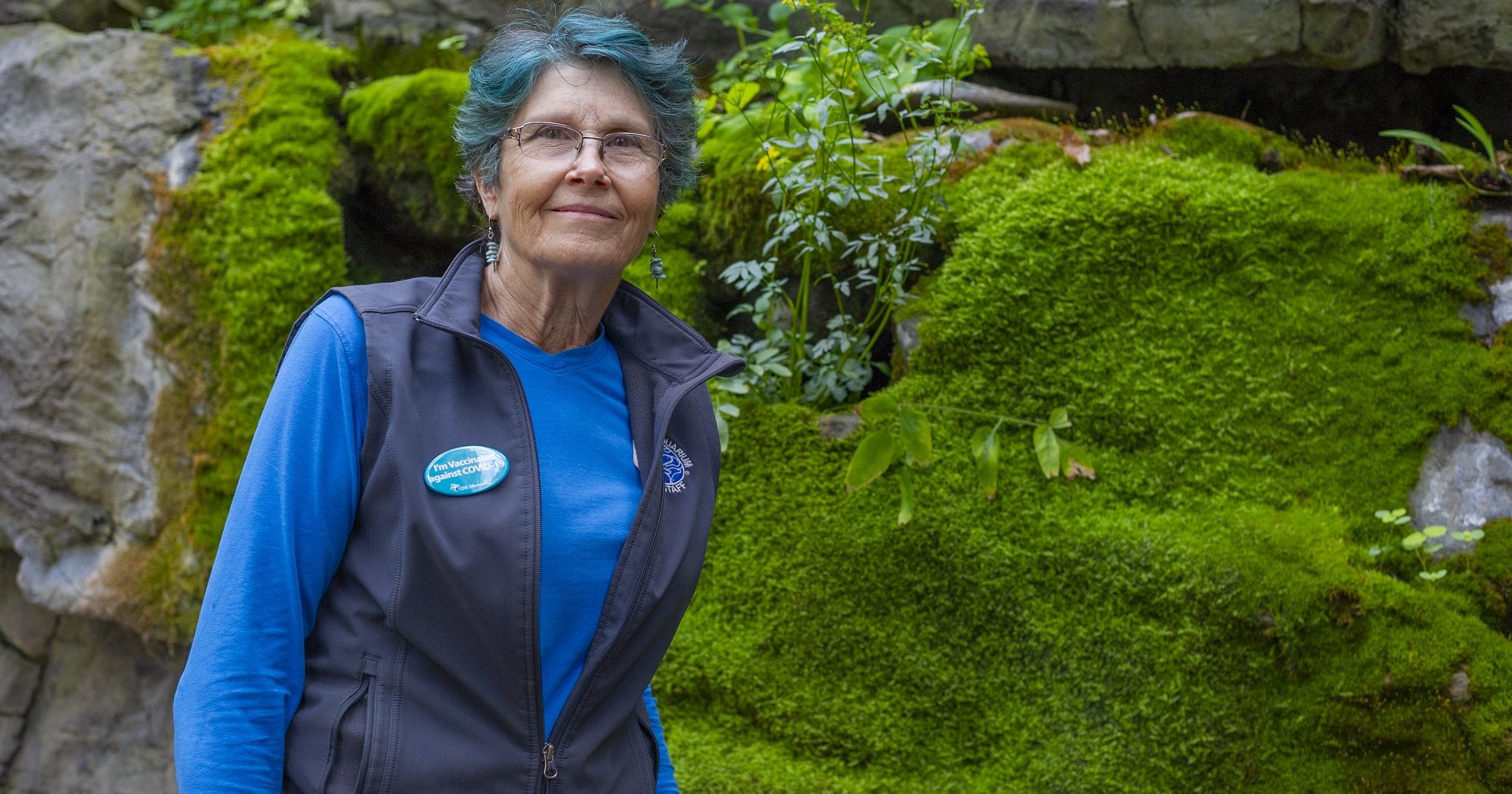Chattanooga, Tenn. (April 12, 2021) – After literally planting the seeds for Chattanooga’s waterfront transformation almost 30 years ago, Tennessee Aquarium Lead Horticulturist Christine Hunt is preparing to hang up her watering hose.
One of the Aquarium’s longest-tenured staff members, Hunt was hired on June 10, 1991, more than 10 months before the first guests would walk through the doors of the River Journey building. When she retires on April 15, she will leave behind a three-decade legacy whose impact touched not only the 25 million guests who have visited the Aquarium since its opening but also communities well beyond the bounds of Chattanooga.
After finishing her degree in environmental science at the University of Tennessee at Chattanooga, Hunt took on a role as a native plant specialist at Reflection Riding Arboretum and Nature Center. She had been working in this position for about a year when her interest was piqued by a newspaper ad seeking applicants for the Aquarium.
“The Aquarium was a big story in town,” she recalls. “It was exciting to be part of it. Just seeing something coming from an idea to being built was fascinating.”
In the period after being hired, Hunt and other early employees worked to set the stage for the first wave of guests. Donning hard hats, they would leave their temporary offices on 7th Street and Broad Street each morning to walk to the Aquarium construction site, a feverish bed of activity on the banks of the Tennessee River,
Hunt’s early responsibilities were numerous and novel, from consulting with designers on the look of smaller exhibits to embarking on fact-finding missions to other institutions for advice on indoor plant care. She also oversaw the planting of the Aquarium’s living forest galleries, including lowering towering native trees into place through the roof using cranes and cherry pickers.
More than simply adding greenery and color to the exhibits, Hunt says her goal has always been to make people forget they’re in an aquarium at all. If she’s done her job well, they’ll feel transported to a far-flung locale, whether it’s a Chinese mountain stream, a volcanic lake or a steamy river delta.
“We wanted it to be accurate. Whatever river it was, the plants on display were from that region,” she says. “I think the percentage of people who appreciate that accuracy may be small, but it’s important to us.
“People seem to walk through some of our exhibits pretty fast. I always want people to slow down and take it in better.”
As any budding gardener knows, horticulture can be a finnicky practice, especially indoors. There has been no end, Hunt says, to the creativity and troubleshooting inherent to caring for plants from all over the world that have to survive coexisting alongside animals who sometimes view them as food.
Among the challenges she’s had to overcome are dealing with wildflower seed-pilfering quail, choosing the ideal branches upon which to display Emerald Tree Monitors and how to pollinate berry bushes in the absence of bees.
Hunt has had no shortage of help in her time at the Aquarium. She has worked alongside more than 350 volunteers, who join her on early morning shifts to ensure the larger galleries are watered and clippings swept up before the first guests arrive.
“The time crunch in the morning is so crucial that we could not do our job properly without the horticulture volunteers,” Hunt says. “They really assist us to be able to present the immersions exhibits for the public.”
Beyond the bounds of the Aquarium, Hunt’s love of nature can be seen in the events and initiatives she has founded and passed forward to new generations of green thumbs and conservationists.
In 1990, Hunt co-organized the UTC’s first Earth Day celebration two years after she and a handful of other environmentalists acted to address the mounting plague of litter on the shores of the Tennessee River and its tributaries.
They called their effort the “Tennessee River Rescue,” the first cleanup of its kind in Tennessee. During the first event in 1988, Hunt and other volunteers gathered litter at two locations. On the event’s 30thanniversary in 2018, Hunt and her co-coordinators oversaw more than 800 volunteers at 20 zones in three Southeast Tennessee counties. That event saw 4,000 bags of trash removed from the waterways.
Hunt also has overseen numerous conservation programs and activities at the Aquarium that have impacted the wider community. Every Arbor Day, she gives away more than a thousand saplings to anyone who wants one in an effort to encourage reforestation in the region. For decades she also has led wildflower walks in Alabama’s DeSoto State Park and during the popular Spring Wildflower Pilgrimage in the Great Smoky Mountains National Park.
A lifelong lover of butterflies, Hunt has devoted tremendous resources to educating others about these beautiful insectile pollinators. In addition to leading butterfly walks in state parks, she has taken Aquarium members on international trips to visit butterfly farms, helped local schools to establish butterfly gardens and led excursions to tag migrating Monarch Butterflies in the Smoky Mountains.
Throughout her career, both in and outside the Aquarium, Hunt has been motivated by a deep-set desire to share her passion for nature and to encourage others to feel the same urge to safeguard it for future generations.
For 30 years, the Aquarium has offered an ideal platform to see that drive fulfilled, she says.
“I’ve loved being part of a team that puts on a great conservation effort,” she says. “I enjoy being with staff and volunteers who offer this great experience to the public.”
